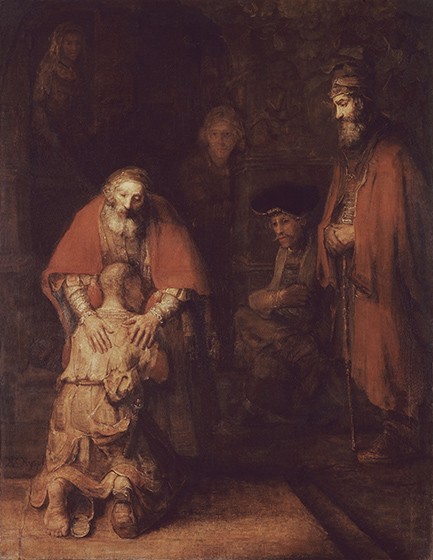The Return of the Prodigal Son, by Rembrandt Harmenszoon van Rijn (1606–1669)

Rembrandt captures the pathos of the initial encounter between an aged, loving father and his wayward son. The painter’s attention to detail creates the mood and emotional tone of the composition. The prodigal’s head is shorn; his clothes are nothing more than rags; and his left shoe has disintegrated, leaving his exposed foot as a metonym for the tender and vulnerable state in which he has returned. In the shadows, servants observe the scene, and in the foreground, the elder brother watches with arms folded in disapproval over the unconditional grace shown to a wastrel. Rembrandt has telescoped the father’s separate encounters with his two sons into one event. Like Jesus’ parable, the painting is open-ended: Will the older brother walk away from this intimate scene of reconciliation or will he join in this celebration? What would we do?





